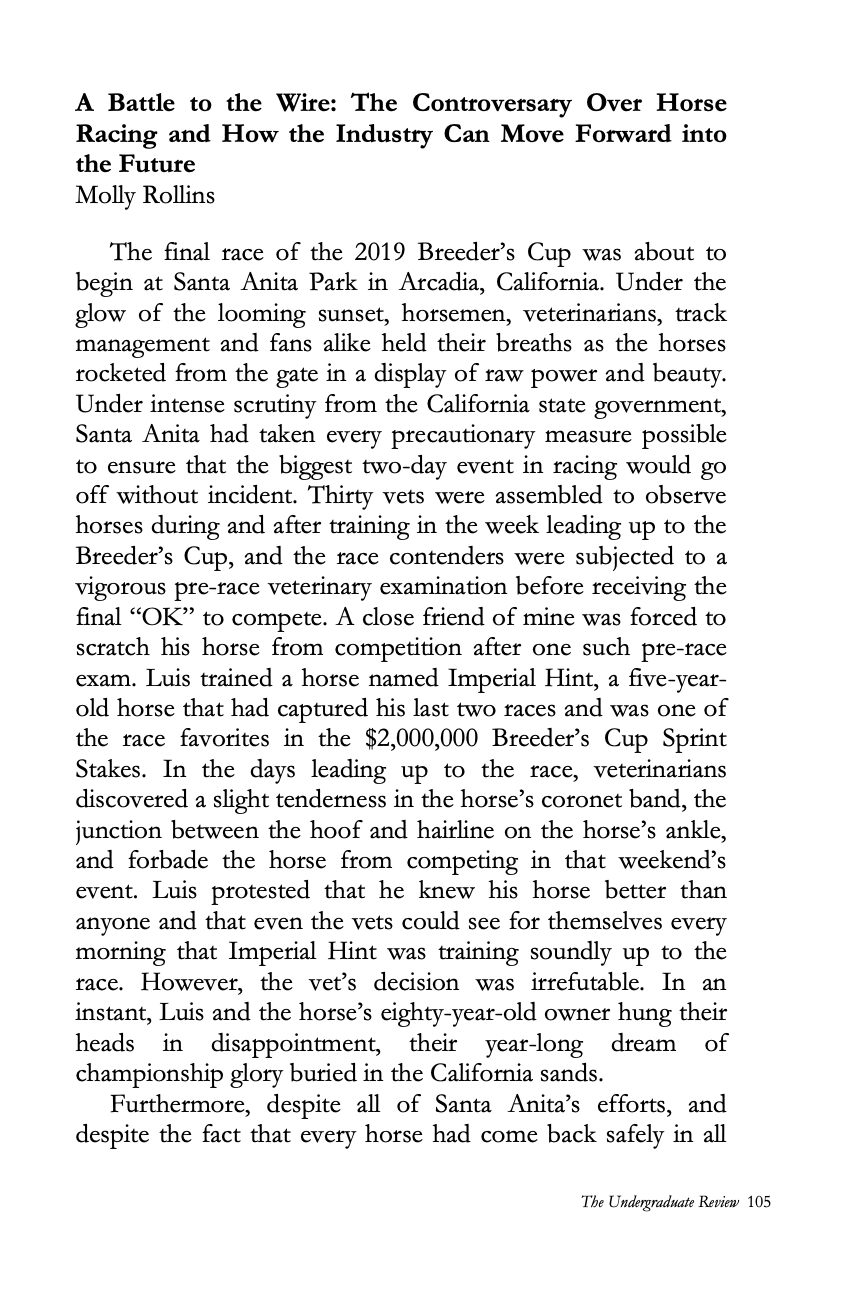A Battle to the Wire
The Controversary Over Horse Racing and How the Industry Can Move Forward into the Future
Abstract
The final race of the 2019 Breeder’s Cup was about to begin at Santa Anita Park in Arcadia, California. Under the glow of the looming sunset, horsemen, veterinarians, track management and fans alike held their breaths as the horses rocketed from the gate in a display of raw power and beauty. Under intense scrutiny from the California state government, Santa Anita had taken every precautionary measure possible to ensure that the biggest two-day event in racing would go off without incident. Thirty vets were assembled to observe horses during and after training in the week leading up to the Breeder’s Cup, and the race contenders were subjected to a vigorous pre-race veterinary examination before receiving the final “OK” to compete. A close friend of mine was forced to scratch his horse from competition after one such pre-race exam. Luis trained a horse named Imperial Hint, a five-year- old horse that had captured his last two races and was one of the race favorites in the $2,000,000 Breeder’s Cup Sprint Stakes. In the days leading up to the race, veterinarians discovered a slight tenderness in the horse’s coronet band, the junction between the hoof and hairline on the horse’s ankle, and forbade the horse from competing in that weekend’s event. Luis protested that he knew his horse better than anyone and that even the vets could see for themselves every morning that Imperial Hint was training soundly up to the race. However, the vet’s decision was irrefutable. In an instant, Luis and the horse’s eighty-year-old owner hung their heads in disappointment, their year-long dream of championship glory buried in the California sands.



